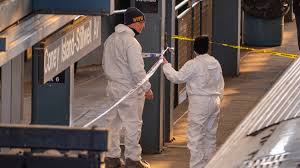
Each heightened the perception that the subways are unsafe.
Mayor Eric Adams and Jessica Tisch, the police commissioner, used the word “perception” seven times in a briefing on citywide crime statistics on Monday. “The subways will always be a bellwether for the perception of public safety in New York City,” Tisch said. “Declining crime numbers are significant, but we must still do more because people don’t feel safe in our subways.” Later the mayor said: “It is clear perception always overrides reality.”
I asked Andy Newman, who covers homelessness and poverty in New York — and used to cover transportation — to talk about the perception and reality of recent crimes in the subway.
People in cars tend to feel like the car itself is protecting them from external threats — it’s like you’re driving around in a little tank. I know, so is everyone else, but fear is not a rational thing.
In the subway, it’s just you, whoever else is there, and a train that weighs about 600 tons (not counting the passengers) barreling in.
And a subway car is a confined space where there may be no easy way to escape danger. That can make people feel trapped and vulnerable, which is scary.
So the perception that the city is less safe, or unsafe, is a lingering consequence of the pandemic?
A lot of people think that something changed during the pandemic and that there were suddenly more homeless people with untreated mental illness on the streets or in the subways.
People with serious mental illness are more likely to be the victims of crime than the perpetrators. But there is a certain percentage of psychotic people who are capable of lashing out.
Some of this may be due to a drop in the number of psychiatric beds in hospitals, but no one knows for sure.
There was a point at the height of the pandemic when paid ridership on the subway had plummeted and homeless people — who were avoiding shelters because they didn’t want to get sick — made some of the trains seem like rolling encampments. That’s no longer the case, but the perception is that things never quite went back to what they were before.
People have been pushed to the tracks even when police officers were patrolling on the platform but were not close enough to stop the attack. It takes only a second to push someone off the platform.
The police seem to believe that the people who habitually jump turnstiles are more likely to go on to commit more serious crimes once they’re in the subway system, so keeping them out prevents serious crime. But the police cannot be everywhere. It’s very hard to keep someone out if they want to go in



